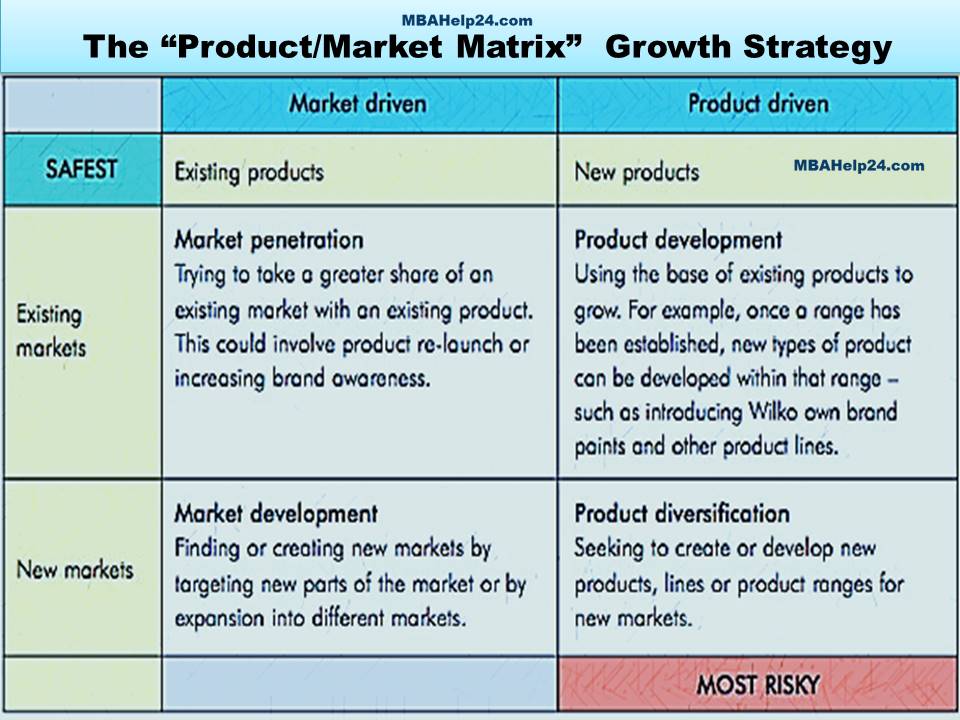The product/market matrix strategy is fundamentally a marketing planning tool. It has limited pragmatic use despite the fact that this method evidently emphasizes the strategic options for an organization seeking to grow even more.
The Product/Market Matrix was developed by highly regarded business strategist, Igor Ansoff.
Ansoff’s matrix presents four unique growth strategies:
- Market Penetration – the organization strives to attain growth with current products or services in their existing markets, endeavoring to maximize its share of the market.
- Market Development – the organization looks for growth through process of focusing on its current products and services to Emerging Market segments.
- Product Development – the organisation produces brand-new products or services aimed at its existing market segments.
- Diversification – the organization evolves through process of expanding into new businesses by creating new and innovative products or services for new market segments.

It is fundamentally a marketing planning tool. It has limited pragmatic use despite the fact that this method evidently emphasizes the strategic options for an organization seeking to grow even more.
Strategy’s Three Key Challenges ?
Beyond Formulation: Results-oriented Strategy leadership?
Strategic Planning: Overview, Significance & Outcomes
The Strategic Planning Process: A Fundamental View
Vision, Mission, Value & Objective Statements: What & What Not?
Market Development : expanding the market for existing products and services through process of, for instance, moving into new geographic segments, rebranding, competitive pricing strategies or even additional distribution channels. This is usually a medium-risk approach and in most cases immensely important for maintaining competitive position in the market.
PESTLE Analysis of the Macro-environment: Definition & Purpose
PESTLE Analysis: 6 Core Variables
Market Penetration: this is actually the least risky approach and furthermore relies on obtaining a standard market share or position. It identifies that the majority of market rate of growth is relatively static knowing that expansion is only going to happen through attaining market share. Considerably a low risk approach, but also low growth and most likely, low margin.
Product Development: launching brand new or differentiated products and solutions into established markets. There exists a more robust factor of risk, however this can be balanced out through the understanding and make use of existing marketing as well as distribution channels.
Diversification: evidently the most risky approach, in spite of that we have witnessed several successful cases. General Electric started as a turbine maker, nevertheless its leasing activities expanded into a major financial solutions business. This strategy needs remarkably comprehensive as well as truthful appraisal along with extremely persistent execution.
Competitive Advantage: Cost Advantage & Differentiation
A Model of Competitive Advantage
Five Forces Model: Summary, Significance & Framework
Using The Five Forces Model In Industry Analysis
Generic Strategies: Concept, Framework, Performance & Risk


































































































